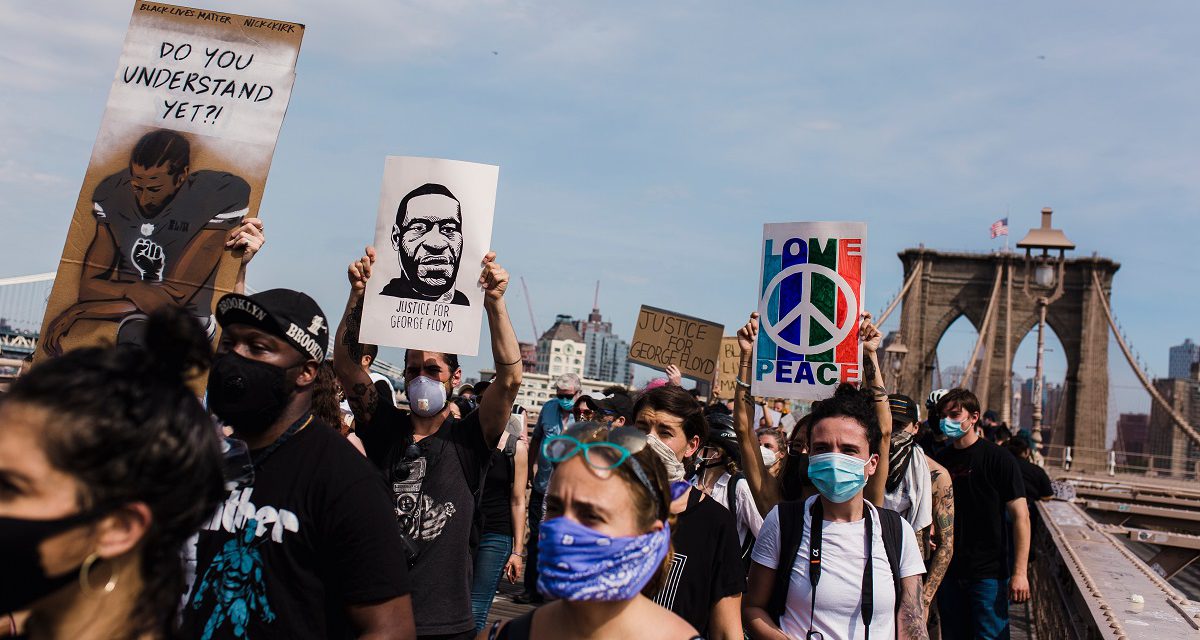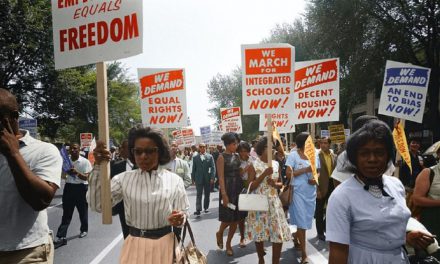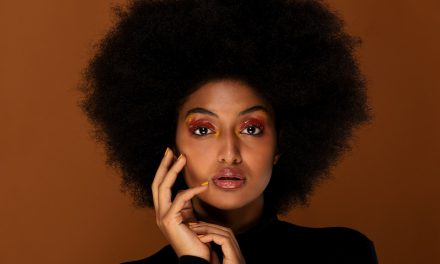By Elena Cleaves
Protests fighting racial injustice following the tragic murder of George Floyd have sparked a national conversation about both police brutality and how we perceive violence against Black people. While the murder of Black Americans at the hands of law enforcement is not new, the overwhelming amount of white bodies and voices joining the fight seems to be. Record unemployment rates and store closures, both caused by the Coronavirus pandemic, certainly played a role, allowing enormous Black Lives Matter protests to pop up in all 50 states and over 60 countries.
Another factor could be that some of the largest cases of police brutality brought to light this year are ones that featured “inarguable,” viral evidence. It may be possible to brush off unseen violence, but millions watched Floyd take his last breaths after officer Derek Chauvin kneeled on his neck for over eight haunting minutes as his colleagues watched on without intervention. It is an extraordinarily grotesque and gutting feeling to watch a life be taken on camera and one that nobody should even have the opportunity to experience.
Exploitation of Black death has plagued America and as a result caused a level of desensitization to violence against Black people. While well-intentioned individuals sharing videos of police brutality may think they are spreading awareness, the repeated sight of violence against Black bodies further deepens existing trauma for Black people watching. The normalization of this violence can also reinforce negative racial stereotypes, such as the false notion rampant in health care that Black people have thicker skin and higher pain tolerances than other races.
A blog titled The Dangers of Exploiting Black Pain warns, “Discriminatory acts against Black people have culminated in near universal Black pain. But with that pain comes its near-constant exploitation.” Exploitation of Black death both trivializes and highlights the struggle for racial equality – we demand that Black lives matter as much as other races, yet we share videos depicting violence against Black bodies more than any other race. As a result, we are desensitized to Black pain, normalize it, and accept it.
It is a shameful recognition of my white privilege that I didn’t fully understand the weight of police brutality against Black Americans until I witnessed the same violence in my own city, something I had never experienced prior to this year. Some people have these conversations as young as five years old, learning from their parents what to do and say should they encounter a police officer at school or while playing outside. I didn’t have a conversation with my own family about police brutality until I was pepper-sprayed point blank at a protest at 26 years old – because I never felt the need to.
In March, I watched on Snapchat as my friend Hannah Hartzler, living in downtown Minneapolis, filmed herself watching livestreams from crowds protesting the death of George Floyd. She filmed well into the middle of the night for several straight days until she watched fires break out and eventually swallow the street she previously lived on. Despite the chaos and having to stay temporarily in St. Paul to ease her parents’ minds, she never critiqued the protestors.
“I constantly had to tell people after that: no, I wasn’t scared. Yes, it was close to me. The looters and protestors were different groups. It was scarier for people who didn’t live here. Everyone I know who loves Minneapolis and the people who live here were trying to explain that the protestors were not what was scary, the cops were.”
Soon after tensions heightened in Minneapolis, protests broke out all over the country. Every major city had hundreds to thousands of people in the streets every day, demanding justice for police brutality nationwide and honoring victims’ names and memories. Protests quickly came to Kansas City, centered at the heart of the infamously racist JC Nichols Plaza fountains.
I joined the first major protest in Kansas City where I witnessed violence in a way I had never experienced. The sensation of being watched that crept over me when I saw a sniper on a rooftop above me is a feeling I will never forget. A flash bang was thrown and my body knew to run before my mind registered what had happened – it was the closest to a gunshot I had ever heard and I felt fear on a visceral new level.
Linked in arms with other protestors, I watched a white man antagonize the riot-geared police, cursing and calling names as surrounding protestors begged him to back off. Before we could stop him, he broke through our chain and rushed towards the cops, causing them to fire a continuous spray of gas across the front lines of protestors. My glasses fell to the ground and I lost my vision as my eyes burned. I began desperately grabbing for the hands of volunteer medics rushing me to help, no idea where my friends or belongings were.
I was amazed at the preparedness and support from everyone around me. Poster board signs with giant red plus signs helped protestors locate medical supplies, gallons of milk to soothe tear gas burns, bottles of water, snacks, and more. Mutual aid groups such as the KC Community Bail Fund passed out flyers with educational information and resources pertaining to bail in case of arrest as well as links to a donation-based bail fund for protestors. Even volunteers who couldn’t get on the ground for fear of exposure made continuous trips to and from grocery stores to restock supplies so protestors could occupy the area all day.
As cities are beginning to look for community-driven alternatives to police, education on these ideas has become more mainstream and accessible, but seeing it happen in my own hometown brought an even clearer perspective. Not only could I see the very real potential for community support replacing police, I also felt an overwhelming sense of unsafety at their hands for the first time. Seeing violence for myself, in my own community, instilled an eagle-eye vigilance in me to look out for aggressions against people of color, a vigilance that always should have been activated.
Despite the appreciation I have for those who have finally joined the fight for racial justice, I also recognize that it never should have taken this long. It should not take violence against white communities in 2020 to FINALLY understand or recognize the violence that has been happening against Black and Brown bodies in this country since its colonization. We are here, but we are late, and we must be ready to work.








